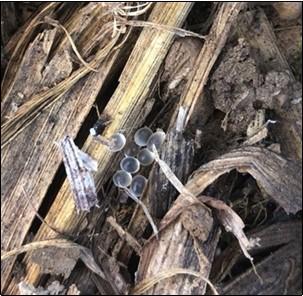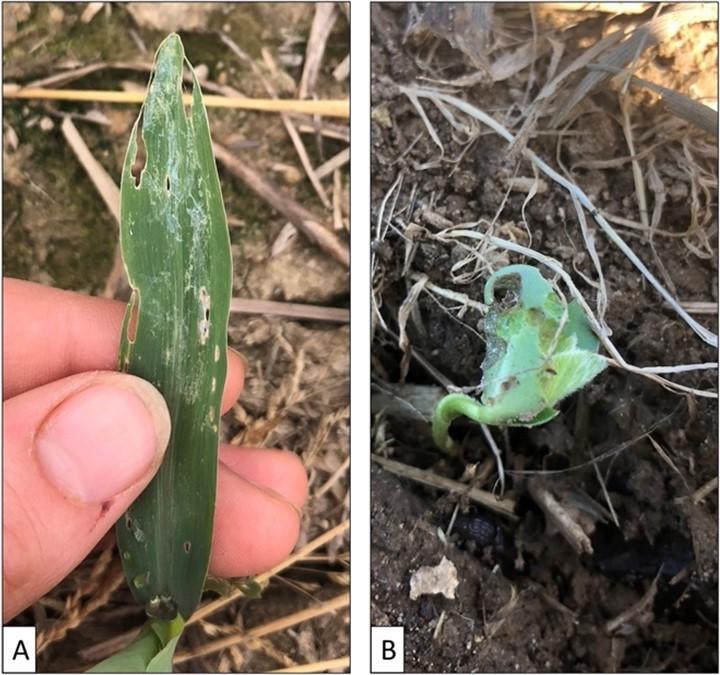Wet Cool Spring May Increase Slug Damage

Recently planted field crops may be at risk from slug damage due to the heavy rains and cooler temperatures we have experienced in the mid-Atlantic from the end of April into the beginning of May. Therefore, the UMD fact sheet “Managing Slugs in Field Crops Using IPM Principles” may be of interest. This fact sheet summarizes the most up-to-date research on managing slugs in our area. Highlights include:
- Identify the pest and monitor. Make sure the issue is slugs. If it is cool and overcast you may find slugs (Figure 1A+B) or slug eggs (Figure 2) in crop residue. Otherwise, as they are nocturnal, you may only find their damage on plants (Figure 3A+B). Corn is generally tolerant to defoliation, while soybeans are at risk if the growing point of the plant is damaged.
- Prevent. If you have not planted yet and if possible, use row cleaners and adjust the planter so that the seed slot fully closes to reduce the risk of damage. In the long term, reducing insecticidal seed treatments may favor slug predatory insects and harvestmen.
- Treat. If you use a slug bait, maximize efficacy by applying just prior to slug activity (in the afternoon or evening when weather is still and mild), but not before periods of heavy rain which may make the active ingredient less effective. Remember, the label is the law. Make sure the product you use is registered in your state and for your crop(s). Follow all application restrictions.

